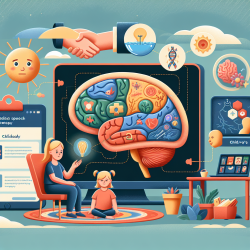The field of autism research is rapidly evolving, with significant strides being made in understanding the underlying neuropathological factors contributing to Autism Spectrum Disorders (ASD). A recent comprehensive review, "The Neuropathology of Autism" by Gene J. Blatt, sheds light on critical brain areas affected in autism and offers insights that can be transformative for practitioners working with children.
The Brain's Role in Autism
Autism is characterized by deficits in social interaction, communication, and repetitive behaviors. The research highlights specific brain regions such as the cerebellum, limbic system, and cortex that exhibit structural and cellular abnormalities. These changes are not uniform across the entire structure but are often localized to specific parts like select nuclei of the amygdala or the fusiform face area.
Cerebellar Abnormalities
The cerebellum, traditionally associated with motor control, also plays a role in cognitive functions. Studies have shown a reduction in Purkinje cells in autistic brains, which may contribute to cognitive deficits observed in autism. Understanding these changes can guide interventions that target motor and cognitive skills simultaneously.
Limbic System Insights
The limbic system, including the hippocampus and amygdala, is crucial for emotion regulation and memory. Abnormalities such as increased cell packing density and reduced cell size have been noted in these regions. This knowledge underscores the importance of therapies that address emotional regulation and memory enhancement.
Cortical Organization
The research also points to altered cortical organization with narrower minicolumns in autistic brains. This finding suggests that interventions focusing on enhancing neural connectivity could be beneficial.
Implications for Practitioners
The insights from this research are invaluable for practitioners aiming to improve therapeutic outcomes for children with autism. By understanding the specific brain areas affected and their functional implications, therapists can tailor interventions more effectively.
- Targeted Interventions: Focus on therapies that enhance motor skills and cognitive functions simultaneously.
- Emotional Regulation: Develop strategies that improve emotion management by targeting limbic system abnormalities.
- Cognitive Connectivity: Implement activities that strengthen neural pathways and enhance connectivity.
This research encourages further exploration into how these neuropathological findings can inform new therapeutic approaches. Practitioners are urged to stay updated with ongoing studies to refine their methods continually.
To read the original research paper, please follow this link: The Neuropathology of Autism.










